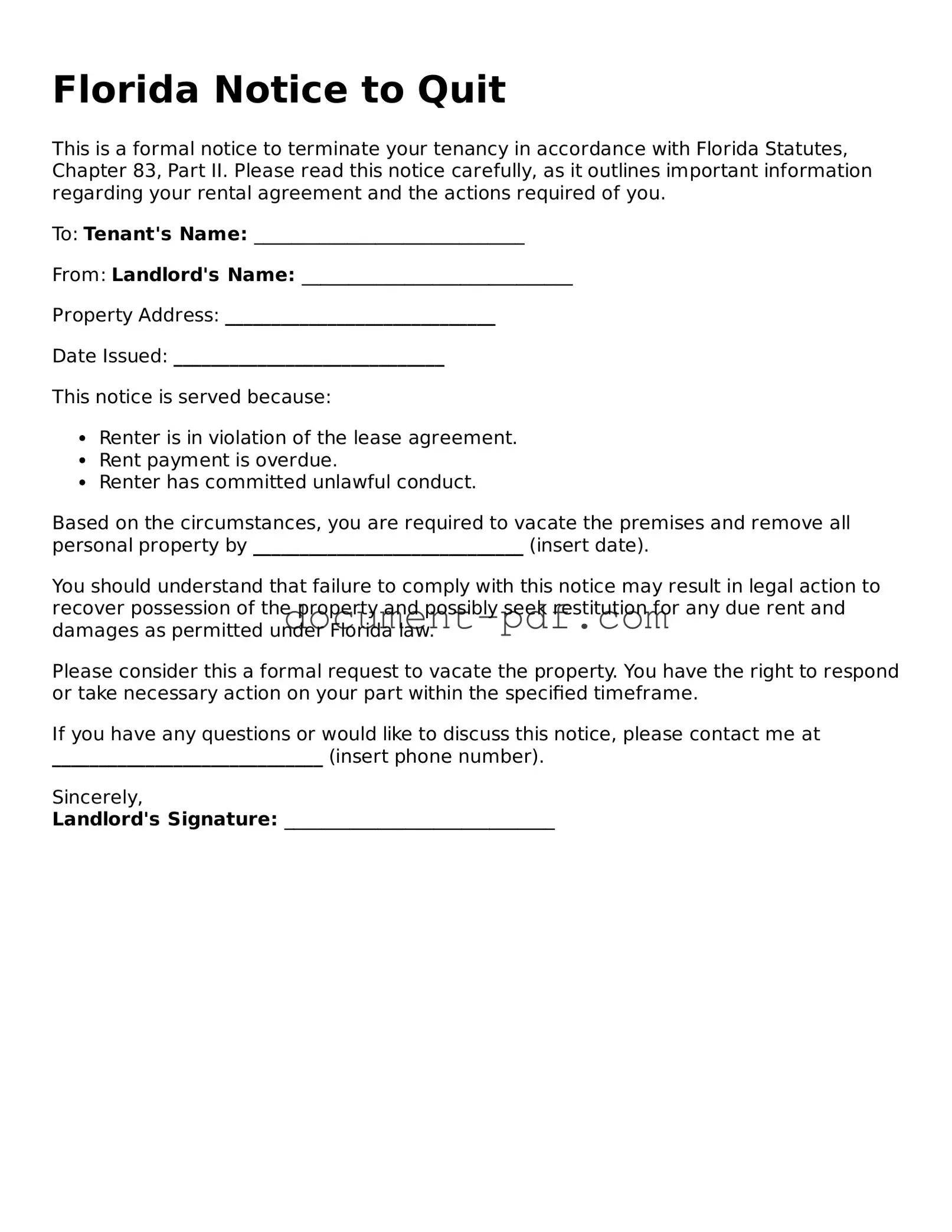Florida Notice to Quit
This is a formal notice to terminate your tenancy in accordance with Florida Statutes, Chapter 83, Part II. Please read this notice carefully, as it outlines important information regarding your rental agreement and the actions required of you.
To: Tenant's Name: _____________________________
From: Landlord's Name: _____________________________
Property Address: _____________________________
Date Issued: _____________________________
This notice is served because:
- Renter is in violation of the lease agreement.
- Rent payment is overdue.
- Renter has committed unlawful conduct.
Based on the circumstances, you are required to vacate the premises and remove all personal property by _____________________________ (insert date).
You should understand that failure to comply with this notice may result in legal action to recover possession of the property and possibly seek restitution for any due rent and damages as permitted under Florida law.
Please consider this a formal request to vacate the property. You have the right to respond or take necessary action on your part within the specified timeframe.
If you have any questions or would like to discuss this notice, please contact me at _____________________________ (insert phone number).
Sincerely,
Landlord's Signature: _____________________________
